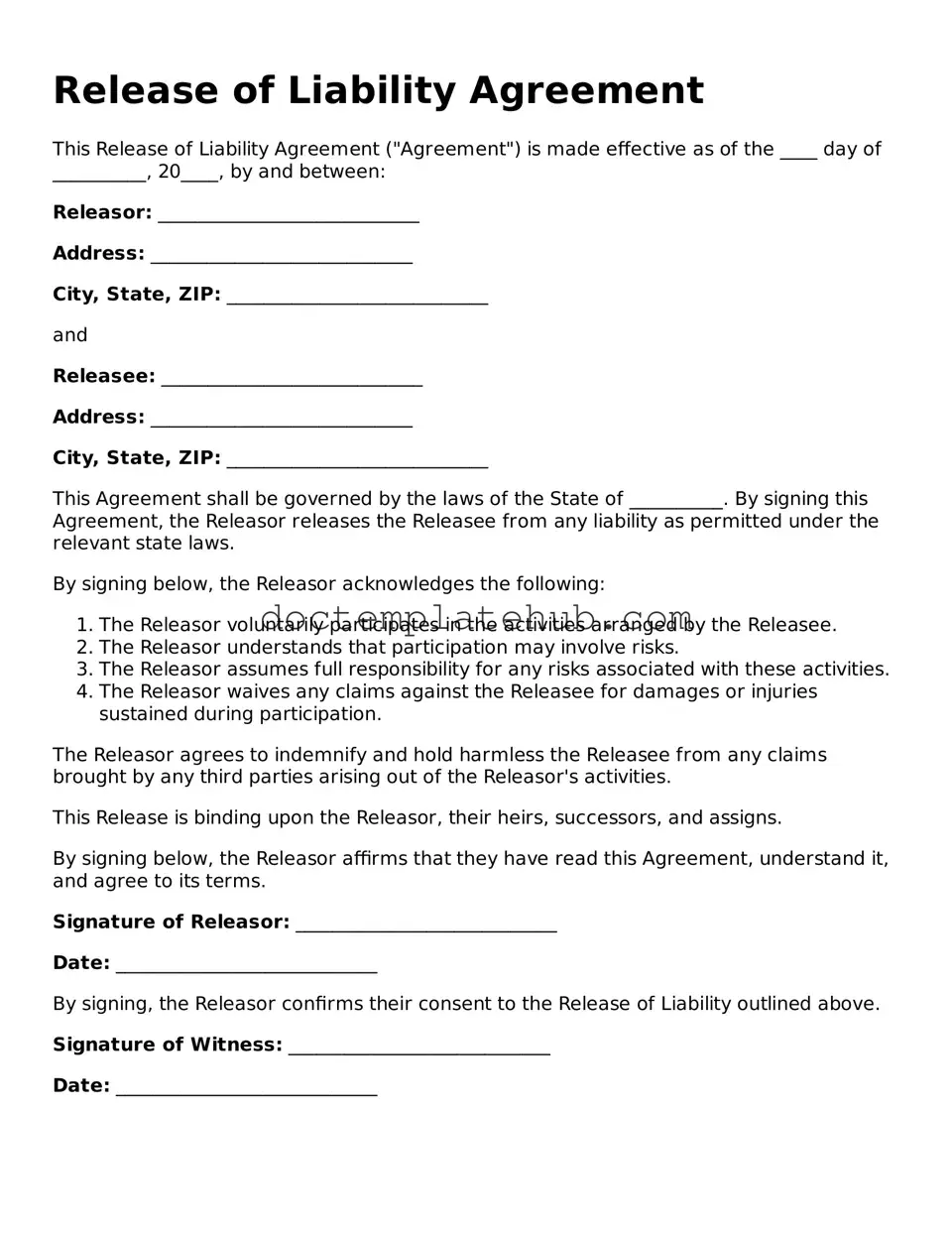What is a Release of Liability form?
A Release of Liability form is a legal document that protects one party from being held liable for injuries or damages that may occur during a specific activity or event. By signing this form, the participant acknowledges the risks involved and agrees not to hold the organizer responsible for any potential harm.
When should I use a Release of Liability form?
This form is commonly used in situations where activities involve inherent risks, such as sports events, recreational activities, or any event where injuries could occur. If you are organizing an event or activity that could lead to accidents, consider using this form to protect yourself and your organization.
Who should sign the Release of Liability form?
All participants involved in the activity should sign the form. If participants are minors, a parent or guardian must sign on their behalf. This ensures that everyone understands the risks and agrees to the terms outlined in the document.
Does signing a Release of Liability form mean I cannot sue?
While signing this form limits your ability to sue for injuries related to the specified activity, it does not eliminate your right to seek legal action in every circumstance. If gross negligence or intentional misconduct occurs, the release may not be enforceable. Always consult a legal professional for advice tailored to your situation.
Is a Release of Liability form legally binding?
Yes, a properly drafted and executed Release of Liability form is generally considered legally binding. However, its enforceability can depend on the specific language used, the circumstances of the activity, and the laws of your state. To ensure effectiveness, it is wise to have the document reviewed by a legal expert.
What should be included in a Release of Liability form?
A comprehensive Release of Liability form should include the names of the parties involved, a clear description of the activity, acknowledgment of risks, and a statement releasing liability. Additionally, it should specify any limitations on liability and include a signature line for participants.
Can I modify a Release of Liability form?
Yes, you can modify a Release of Liability form to suit your specific needs. However, any changes should be made carefully to ensure that the document remains legally enforceable. It is advisable to seek legal guidance when making modifications.
How long is a Release of Liability form valid?
The validity of a Release of Liability form typically lasts as long as the risks associated with the activity remain unchanged. However, if the nature of the activity changes significantly, or if a substantial amount of time passes, it may be prudent to have participants sign a new form.
Can a Release of Liability form protect against all types of claims?
No, a Release of Liability form cannot protect against all types of claims. It primarily covers ordinary negligence. Claims arising from gross negligence, willful misconduct, or violations of public policy may not be protected. Always consult with a legal expert to understand the limitations of the form.
Where can I obtain a Release of Liability form?
You can find templates for a Release of Liability form through various online legal resources, or you can consult with a legal professional to create a custom document tailored to your specific needs. It is important to ensure that any form you use complies with your state's laws.
